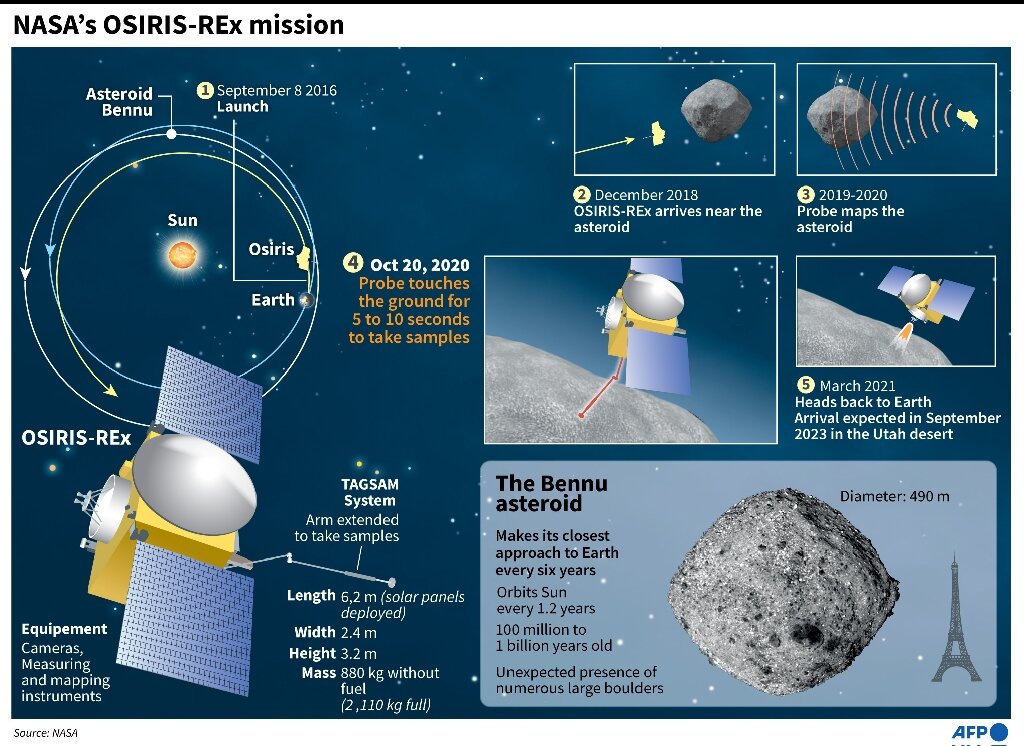The probe's mission is to collect fragments that scientists hope will help reveal
Fragments from the surface of the asteroid are incollector at the end of the three-meter robotic arm of the probe and are slowly carried away into space. The fact is that some stones prevent the compartment from closing completely.
This hand made contact with the asteroid Bennu ona few seconds last Tuesday. This was the culmination of a mission launched from Earth about four years ago. It is estimated that the probe collected about 400 grams of fragments. And this is much more than necessary - at least 60 grams, as previously reported by NASA.
Scientists need to place the sample in a capsule that sits in the center of the probe, and surgery has been pushed back to Tuesday from the scheduled date of November 2 due to a leak.
“The abundance of material we collected from Bennuallowed to speed up the decision on placement, - said Dante Lauretta, project manager. OSIRIS-REx is due to return home in September 2023 and we hope it will be the largest returned from space since the Apollo era. "
 Graphics of the stages and details of the Osiris-REx mission, which took samples from the asteroid Bennu on October 20.
Graphics of the stages and details of the Osiris-REx mission, which took samples from the asteroid Bennu on October 20.
The deployment operation will take several days, NASA said, as it requires the supervision and participation of the entire team, unlike some other OSIRIS-REx operations that are performed autonomously.
After each step in this process, the cosmicthe ship will send information and images back to Earth so scientists can make sure everything is going right. The probe is so far away that its signals reach the Earth in 18.5 minutes, and any signal from the control room takes the same time to reach OSIRIS-REx.
Read also
The annual mission in the Arctic has ended and the data are disappointing. What awaits humanity?
Scientists have found out why children are the most dangerous carriers of COVID-19
Nest of Asian killer hornets found and destroyed in the USA